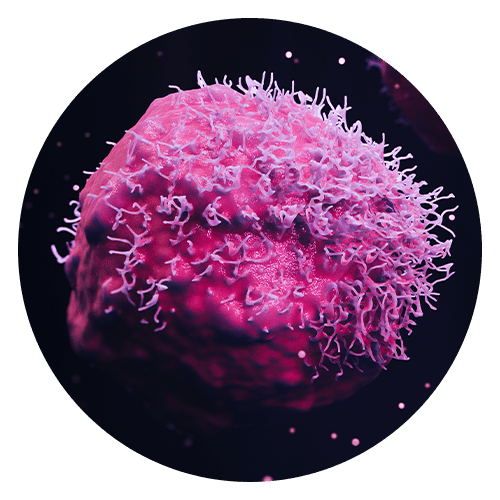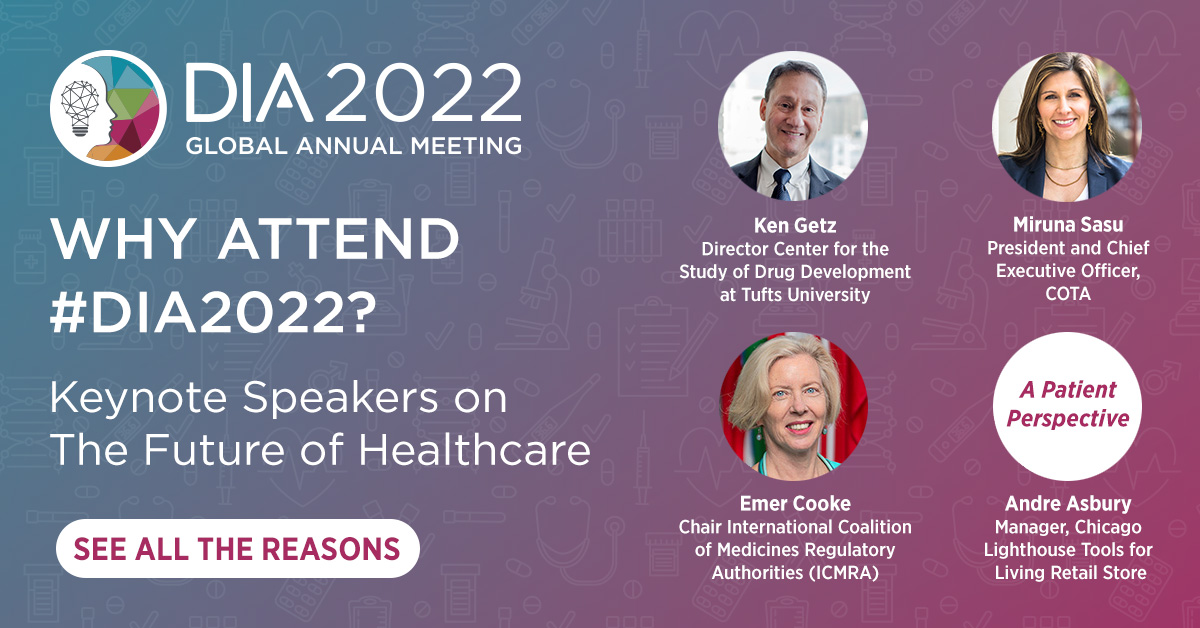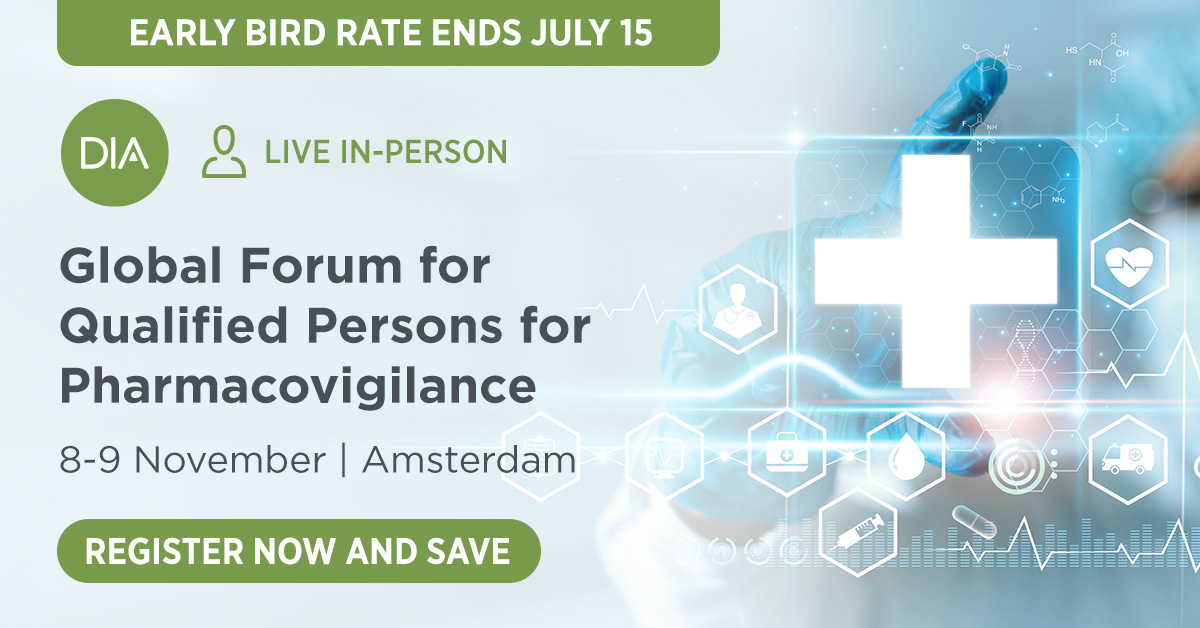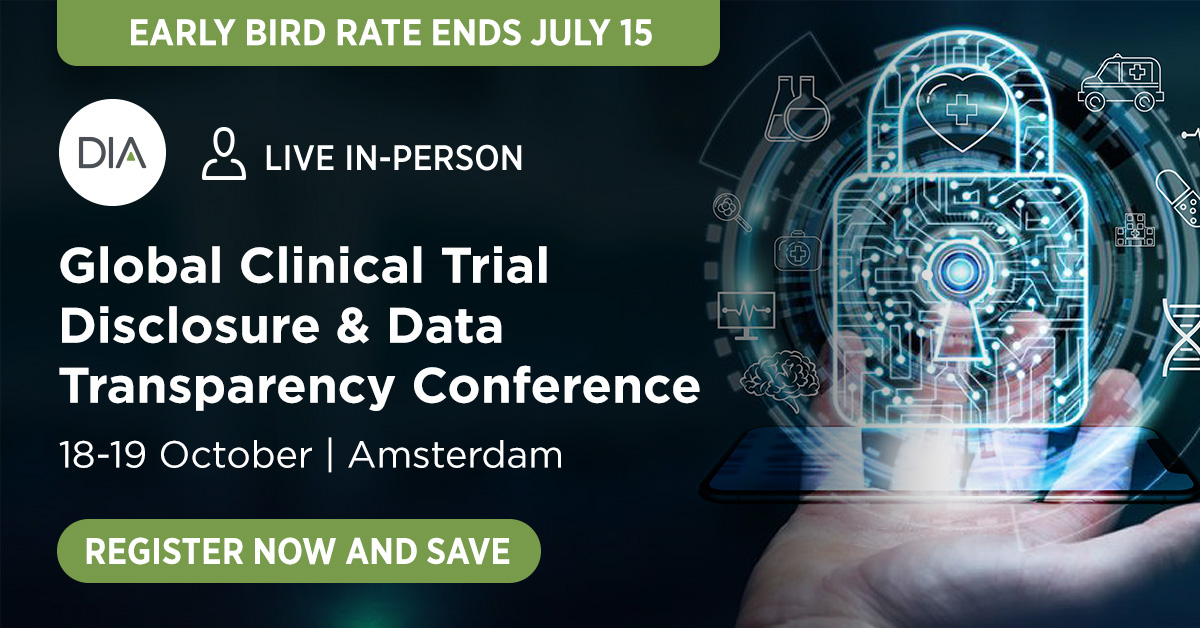Table of Contents
EXECUTIVE LEADERSHIP
Subscribe
Love Global Forum’s new online format? Subscribe today and never miss an issue.
Editorial Board
Content stream editors
Gary Kelloff US National Institutes of Health
regulatory science
Isaac Rodriguez-Chavez ICON plc
Patient engagement
Trishna Bharadia Patient Advocate and Media Contributor
Mary Stober Murray National Minority Quality Forum
Editorial Staff
Sandra Blumenrath, Managing Editor, Scientific Publications DIA Scientific Communications
Chris M. Slawecki, Senior Digital Copyeditor DIA Scientific Communications
Regional Editors
David Mukanga Bill and Melinda Gates Foundation
ASEAN
Jin Shun Sandoz
AUSTRALIA/NEW ZEALAND
Richard Day University of New South Wales, Medicine, St. Vincent’s Hospital
CHINA
Ling Su Shenyang Pharmaceutical University, Lilly Asia Ventures
Europe
Julie O’Brien Pfizer
INDIA
J. Vijay Venkatraman Oviya MedSafe
JAPAN
Ozawa Goshi Real Discovery Outdoors Co,. Ltd.
LATIN AMERICA
Cammilla Gomes Roche
USA
Ebony Dashiell-Aje BioMarin
Young Professionals Editor
DIA Membership
Bringing together stakeholders for the betterment of global health care.
University of Pittsburgh School of Medicine
obel Prizes in Medicine and Physiology were awarded in 1966, 2005, 2008, and 2020 to scientists who discovered that cancers can be caused by infectious agents, which opened opportunities to prevent those cancers with vaccines. Vaccines against hepatitis B virus (HBV), which causes liver cancer, and human papilloma virus (HPV), which causes cervical cancer, have already saved millions of lives by preventing these lethal cancers. Vaccines against other known cancer-causing viruses are under development. Only one in 10 human cancers is known to have infectious etiology, leaving the most common cancers, such as melanoma, breast, prostate, pancreatic, colon, lung, head and neck and brain cancer, T and B cell lymphomas, and multiple myeloma seemingly without a possibility for prevention by vaccination. It is now clear, however, that the immune system can recognize nonviral cancers by their expression of molecules that, while not viral or bacterial in origin, are nevertheless foreign to the immune system due to differences in expression on cancers compared to normal cells. These molecules, known as tumor antigens, are candidates for preventative vaccines for nonviral cancers.
Oxford PharmaGenesis
atient engagement is becoming increasingly embedded in the healthcare sector. While it is understood that patient engagement is “the right thing to do” and benefits all stakeholders involved, a clear way of measuring its value remains to be determined. Here, we discuss the importance of standardizing the measurement of the value of patient engagement. It is hoped that a unified approach will ensure that patient engagement remains a key driver for the success of new healthcare developments.
Carlos Garner
Natalie Ake
Eli Lilly and Company
Khyati Roberts
Melodi McNeil
AbbVie
Jerry Stewart
Pfizer
Alexis Reisin Miller
Merck
Susan Berger
Bristol Myers Squibb
Sharon Olmstead
Novartis
Ginny Beakes-Read
Amgen
GlaxoSmithKline
Sanofi
Genentech
Janssen
Bayer
he world watched as global regulators and sponsors worked together with a sense of urgency to bring diagnostics, treatments, and vaccines to market within a year of identifying coronavirus disease (COVID-19). This incredible accomplishment offers a unique opportunity to apply similar efforts to other diseases of significant public health burden. Cardiovascular and neurological diseases are both associated with even greater morbidity and mortality compared to COVID-19. We cannot ignore the lasting social and economic impact of other highly prevalent, serious illnesses.
Special Section: Cancer Moonshot – Five Years and Rising
Special Section
Cancer Moonshot – Five Years and Rising

ear Global Forum Readers,
Cancer has impacted all our lives in one way or another. Whether we have experienced the pain and anguish associated with diagnosis and prognosis, or the burden of treatment and its side effects, cancer significantly affects the lifetime trajectory and long-term outlook of patients and their caregivers.
The Cancer Moonshot was birthed in 2016 from the urgent need for further advancement of novel therapeutics to treat and improve the survival outcomes of both adults and children diagnosed with cancer. At that time, there were greater than 1.6 million new cancer diagnoses and 595,690 cancer deaths estimated in the US and a need for better treatment options. 2016 also marked the advent of expedited technological advances, including great progress in precision medicine, genomics, and innovative immunotherapy that led to many of the breakthroughs from which patients benefit today.
![]() Podcasts
Podcasts
Special Section: Cancer Moonshot – Five Years and Rising

n 2021, there were an estimated 1.9 million new cancer cases diagnosed in the US and 608,570 cancer deaths, or more than 166 deaths per day. The 2022 reignition of the Cancer Moonshot aims to cut that number by at least half over the next 25 years.
Special Section: Cancer Moonshot – Five Years and Rising

igital technologies have had profound effects on how we communicate (i.e., smartphones), share information (i.e., social media), and create (i.e., 2- and 3-D printing). Now, they are having an impact in healthcare, too. The latest (and arguably most exciting) example is digital therapeutics (DTx): medical treatments to address health conditions via a combination of software and communications. DTx are in use or being tested for a growing list of diseases and conditions: Type 2 diabetes, congestive heart failure, obesity, Alzheimer’s disease, dementia, asthma, substance abuse, hypertension, anxiety, depression, and more.
Special Section: Cancer Moonshot – Five Years and Rising

herapies based on RNA molecules have been researched for decades, initially showing promise in animal models and some ultimately in clinical trials. Research on messenger RNA-based (mRNA) vaccines started in the 1990s when the first mRNA flu vaccine was tested in mice. Despite its promise, including the potential for delivering intact mRNA directly into cells, advancing mRNAs as a treatment modality still faces technical challenges.
Special Section: Cancer Moonshot – Five Years and Rising

mproving preventative care and chronic disease management has helped slow the process of aging. In the United States, the 65 and older population has grown by over a third in the past decade, and the number of adults aged 85 and older is expected to nearly triple by 2060. Yet, living longer comes with risk. Genetic mutations are generally managed by the body’s ability to perform necessary repairs. However, with increasing age, the number of mutations also increases, which can give rise to cancer. Indeed, people aged 67 and older represent half of cancer patients and cancer is the second leading cause of death for people aged 85 and older. We owe it to ourselves to do something about this.
Special Section: Cancer Moonshot – Five Years and Rising
Oncology Articles Published in Global Forum 2020-2022

February 2020
Immunogenic Cell Death: Bench Comes to Bedside…With Caveats
J. Milburn Jessup

May 2020
Changing the Game in Oncology Development
DIA Global Oncology Development 2020
Eri Sekine

DIA Latin America Regulatory Conference 2022

ollaboration, convergence, and other best practices have been at the center of discussions related to the regulatory environment in Latin America and the Caribbean, including DIA’s Latin America Regulatory Conference (LARC) 2022, where voices from global regulators, regional and international organizations, industry, and academia discussed the strategies supporting current practices and future trends in regulatory activities in one of the world’s most dynamic pharmaceutical markets.
Around the Globe
@JanssenGlobal
eal-world data (RWD) and real-world evidence (RWE) have played an increasingly important role in regulatory decision making in recent years. RWE has been commonly accepted by regulators for post-marketing safety surveillance activities but less so in the pre-marketing authorization phase. However, the pandemic provided an opportunity for regulators to assess the applicability of RWE to enable emergency use authorization or conditional approval of COVID-19 vaccines.
A Career in Pharmacovigilance: Automation with a Human Touch
harmacovigilance, monitoring the safety of therapeutic products approved for patient or consumer use, stepped into the world’s center stage during the urgent global development of vaccines and therapies to combat COVID-19. In the following Q&A, an experienced PV professional shares her original motivation for choosing a career in PV and safety, and the vision that keeps inspiring her work in this field, with a young professional who recently started this vocation.









